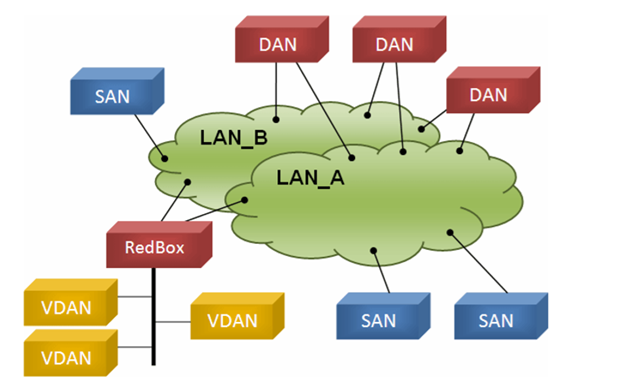PRP (Parallel Redundancy Protocol) is a protocol standard for Ethernet networks that allows seamless network redundancy against any simple network failure, with transparent redundancy to the application.

Configuration of a PRP network
In PRP protocol, there must be two parallel networks, LAN_A and LAN_B, in which the preferable and totally redundant adherent devices are called DANs (Dual Attached Nodes), that is, they have two interfaces, one on each network. Devices with a single interface, called SAN (Single Attached Nodes), can also take part of the architecture, but do not benefit from redundancy, as well as other devices that do not directly support PRP protocol, called VDANs (Virtual Dual Attached Nodes), can be connected through a RedBox (Redundancy Box).
This Driver behaves as a DAN, it is enough that the computer has two physical network adapters and one virtual network adapter, installed and configured correctly. The next topics show the steps for this configuration:
•Installing and Configuring a Traffic Sniffer Library
•Installing and Configuring a Virtual Adapter
•Configuring Physical Network Adapters
•Installing, Configuring, and Executing the ElipsePRPSvc.exe Service